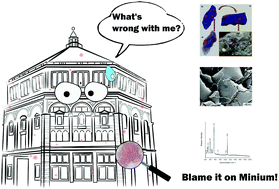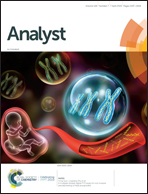A multi-analytical approach for the study of red stains on heritage marble
Abstract
Red stains are a common discolouration on stone cultural heritage all over the world. These are very difficult to remove and little is known about the reddish pigmentation. Numerous red stains were mapped on the Baptistery of San Giovanni in Florence, one of the most important monuments in Italy. This paper is focused on red stains on marble stone and the results of a detailed multidisciplinary approach are presented. Several analytical and investigation techniques (such as optical microscopy, X-ray fluorescence mapping, X-ray micro-tomography, micro-Raman spectroscopy, scanning electron microscopy with energy dispersive spectroscopy, microbial isolation, colorimetric measurements and isotopic analyses) were used to better understand the origin and processes involved in this kind of alteration. Analyses of the red stains led us to believe the presence of minium (lead tetroxide) and Pb are usually concentrated in the spaces between calcite grains. Red stains of Pb isotopic composition also overlap with data from Sardinian mines. These preliminary data seem to reinforce the suggestion of a source of lead from some metallic items (during restoration campaigns between 1938 and 1944, damaged parts were removed and replaced, and the new marble cladding was fixed with iron brackets treated with minium).



 Please wait while we load your content...
Please wait while we load your content...